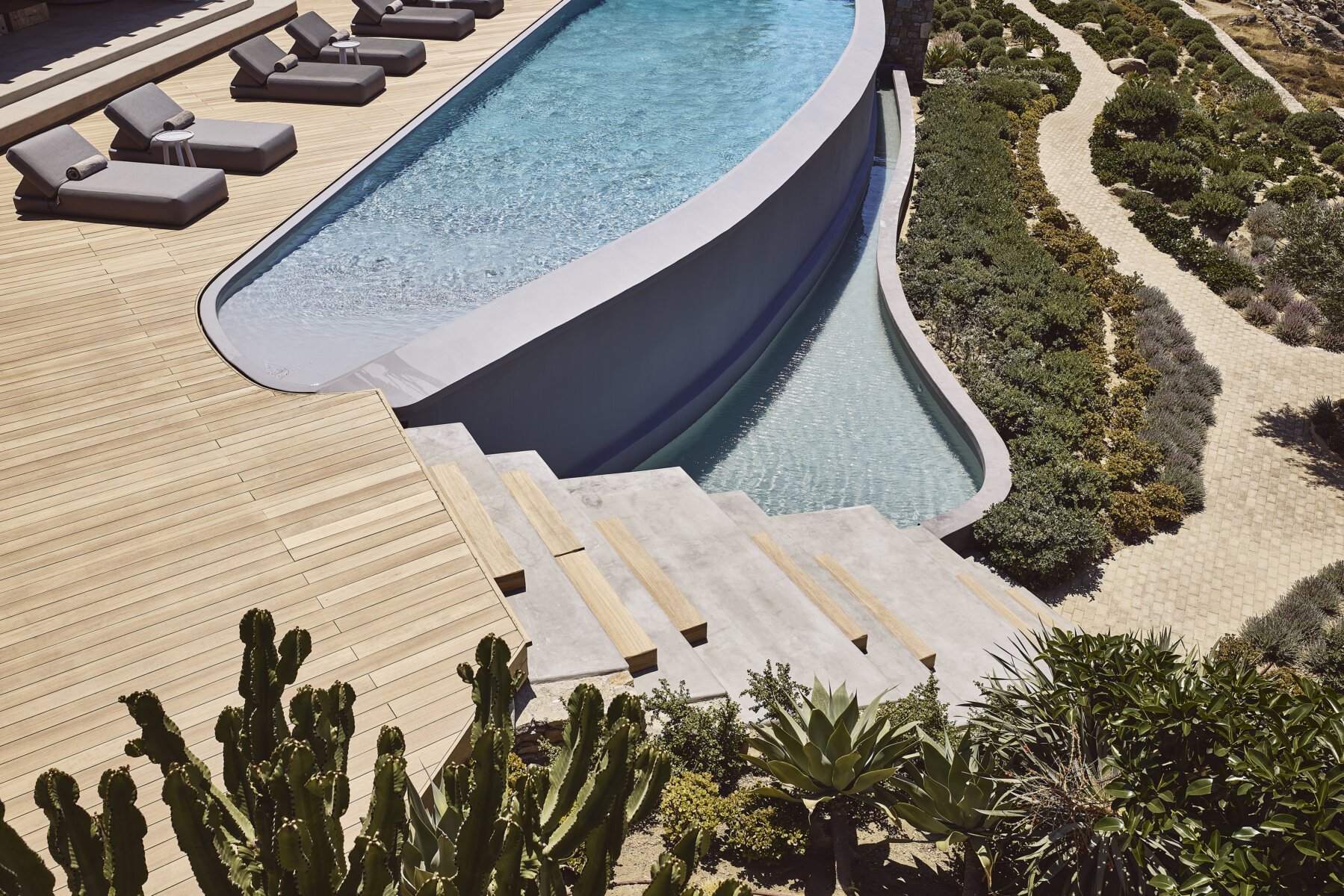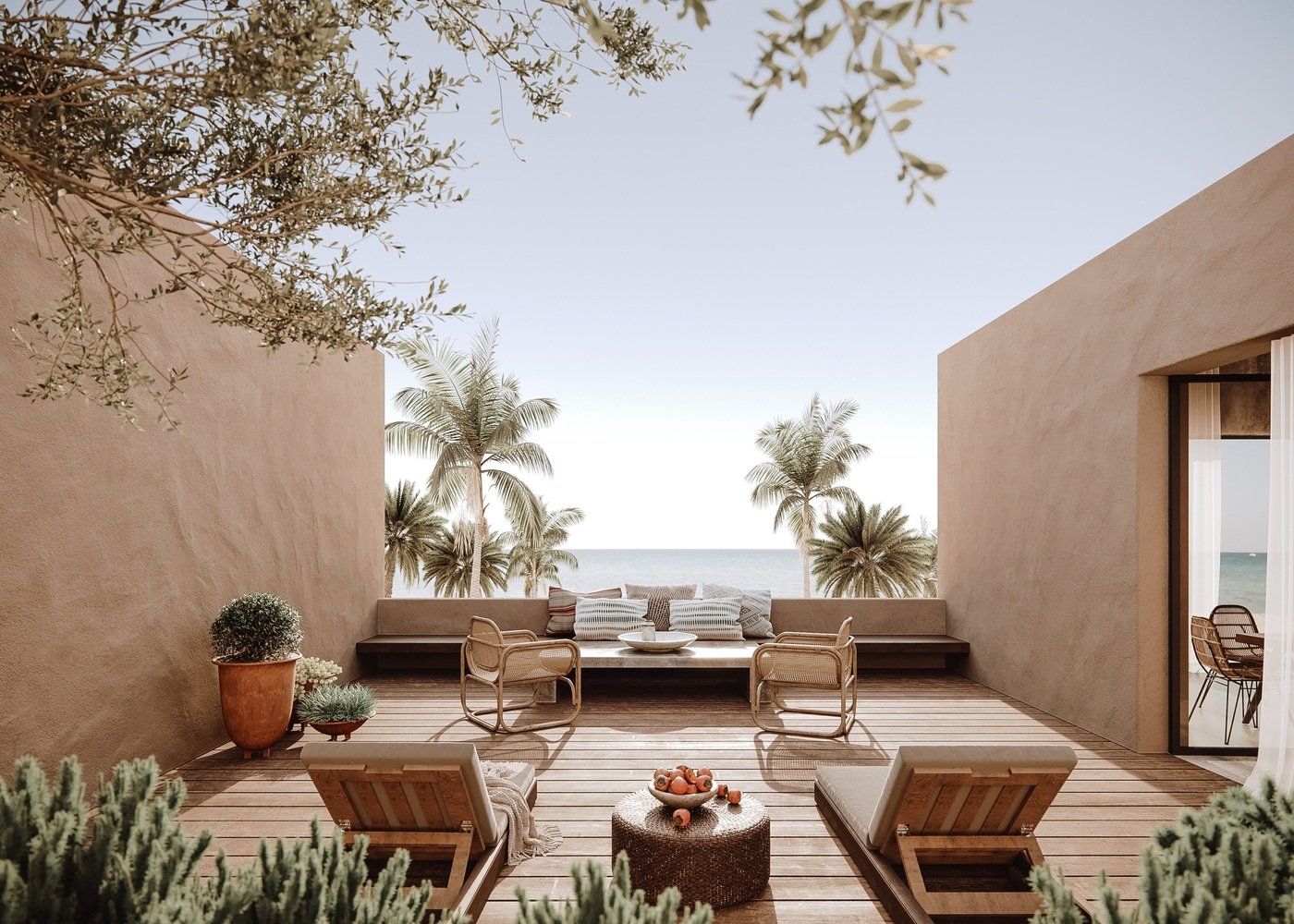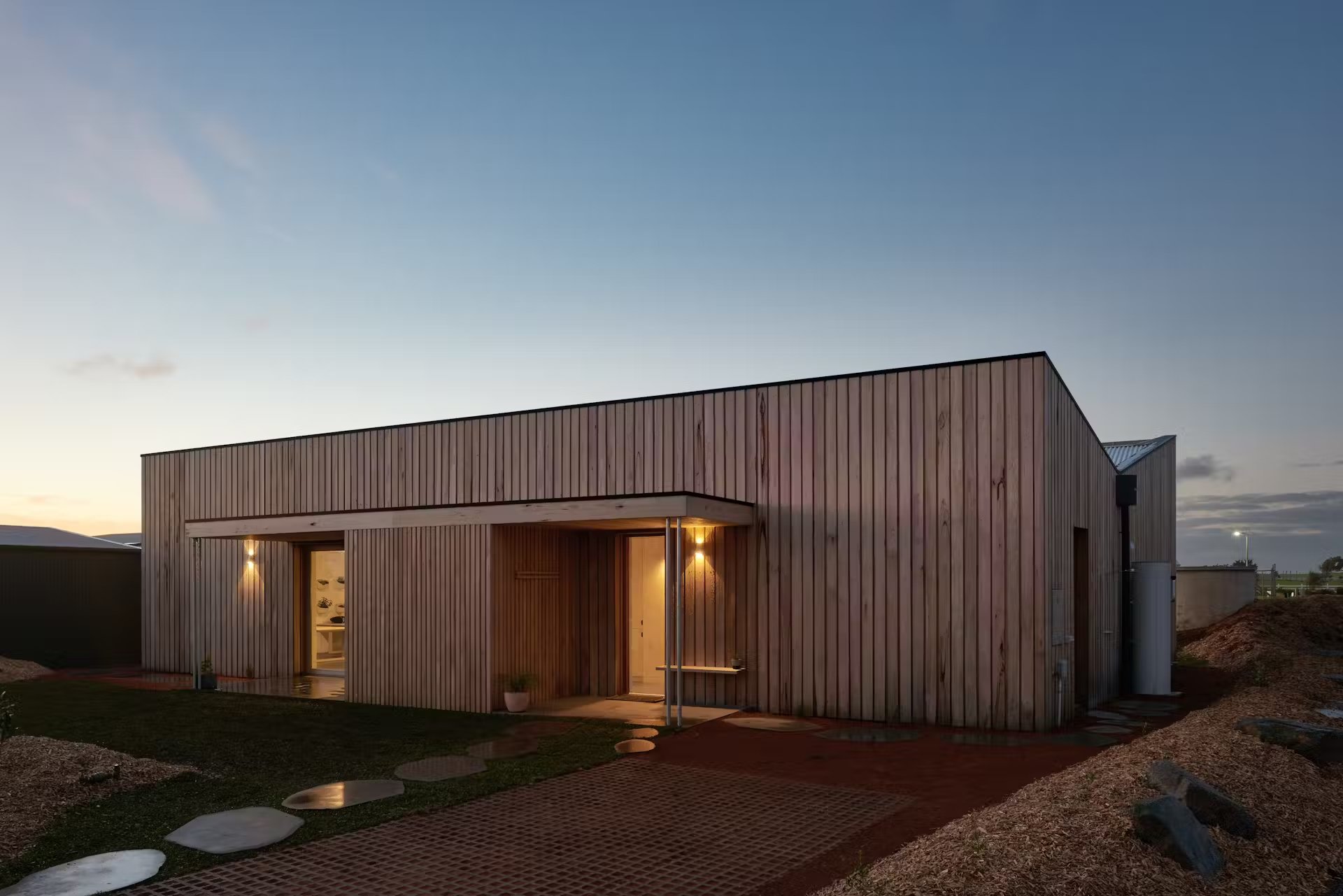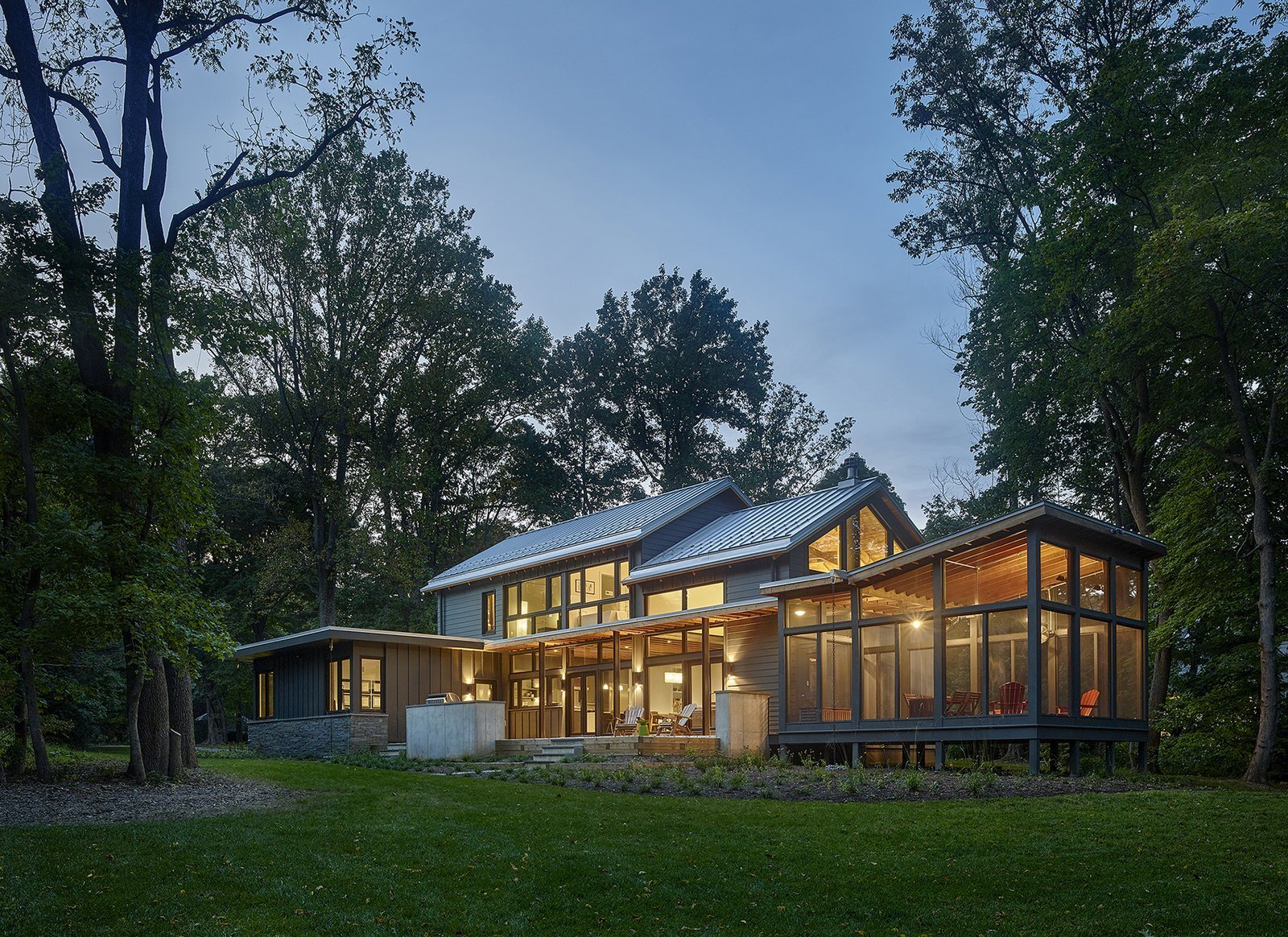Passive Houses - 5 International Architect Designs
Wallingford Passive Solar House, courtesy of Dwell Magazine
The heating, cooling and powering alone of residential buildings already account for 10.9% of total emissions and, according to Nobel prize-winning economist Paul Romer, “we’re going to develop more urban area in the next 100 years than currently exists on Earth.”
Buildings are already responsible for about 40 percent of the world’s greenhouse-gas emissions - both operational energy and embodied energy, the energy expended during construction, contribute to these emissions. In a world where there is a global need for more than two billion new homes by the end of the 21st century, we sorely need to integrate new construction innovations.
Passive houses reduce emissions both in their construction and their operation by leveraging natural phenomena such as sunlight, shading and cross ventilation. Designed to work with nature rather than fight against it, passive architecture maximizes energy efficiency and minimizes waste. Architects have jumped on passive house building as they look for ways to reduce the carbon emitted when houses are built or renovated.
Once dark and boxy, today’s passive houses are bright, open and inviting. Below, we outline the work of five architects pushing the boundaries of passive housing and carbon positive architecture around the world.
Five International Passive House Architects from New York to Japan
78 Third Place, Carroll Gardens, courtesy of Baxt Ingui Architects
#1 Baxt Ingui Designs US’s First Passive House Plus in Carroll Gardens, NYC
Where: New York City, New York, USA
What: 78 Third Place Passive House, Renovation
By Whom: Baxt Ingui, Zola Windows and Brooklyn Solarworks
Passive Features: Triple-glazed windows, air tight doors, solar canopy, ERV system
In a recent article for Dwell, Samantha Daly pointed to New York architecture firm Baxt Ingui Architects and their 78 Third Place residential build. She identified it as one of several projects “leading the charge toward a greener, more-environmentally friendly future.” According to the firm’s website, Baxt Ingui has been “a leader in design and sustainability for over 40 years” in New York.
Not only does the NYC firm design passive houses from the ground up, but it also retrofits and renovates existing homes. 78 Third Place was originally built in the early 20th century but was transformed into a near net zero home in 2016. Baxt Ingui, Zola Windows and Brooklyn Solarworks worked with the Landmarks Preservation Commission to ensure all alterations respected the existing architecture.
Passive house design Features of 78 Third Place
Together, these three companies restored the facade, added a third floor and constructed a brand new rear addition. Updates were made to the home’s insulation, with period-appropriate replacements of triple-glazed windows, air-tight doors and other detailing provided by Zola Windows.
Brooklyn Solarworks designed a 378 square foot solar canopy for the home. Baxt Ingui requested an ERV (energy recovery ventilation system) to reduce indoor air pollution and pests. After its renovations were completed, 78 Third Place became the first certified Passive House Plus in the USA. Photos of the Carroll Gardens project can be found on the firm’s website.
Wallingford Passive Solar House, courtesy of Dwell Magazine
#2 Wyant Architecture Designs Wallingford Passive Solar House in Nether Providence Township, PA
Where: Nether Providence Township, Pennsylvania, USA
What: Wallingford Passive Solar House, New Build
By Whom: Jeffrey Wyant and Maria Keares Wyant of Wyant Architecture Designs
Passive Features: Rainwater capture, cross ventilation, geothermal heating, super insulation, air sealing, triple-pane windows
Second on our list of architects pushing passive housing design into the future is Wyant Architecture - a boutique architecture firm based in Philadelphia, Pennsylvania, focused on custom-build homes that respond to their unique environments while serving each family sustainably. The firm’s Wallingford Passive Solar House is just one stunning example of their work in the passive residential architecture space. Built on a 1.3 acre lot in 2017, the 4,500 square foot home takes full advantage of its natural surroundings.
Passive house design Features of Wallingford Passive Solar House
According to Wyant’s description of the project, Wallingford “combines modern architecture, environmental responsibility, and a flexible open floor plan.” The home strongly resembles an expansive greenhouse, “framed in exposed steel with expansive windows [and] uses exterior views and shifting patterns of light to establish a dialogue with its surroundings.” Wallingford’s interior features a number of local natural materials, including Douglas fir timber framing, oak floors and Pennsylvania bluestone - a local sandstone.
Wyant was able to employ passive solar design strategies to “reduce energy consumption and environmental impact” even in such a large home. The home’s positioning on its build site also contributed to its passive house certification. Wallingford benefits from a rainwater capture system, “geothermal heating and cooling, super insulation and air-sealing, and Passive House quality triple-pane windows.” Together, these elements “ensure the home’s long-term efficiency and comfort.” Photos of the Wallingford Passive Solar House can be found on the firm’s website.
10 Star Home; Image by Dan Hocking
#3 Design Collaboration Creates Victoria’s First 10 Star Home
Where: Cape Paterson, Victoria, Australia
What: The 10 Star Home, New Build
By Whom: Clare Cousins Architects and The Sociable Weaver
Passive Features: Five-kilowatt photovoltaic panel on the roof, industrial concrete floors that improve thermal mass, under-slab insulation, hardwood certified by the Forest Stewardship Council (FSC), double-glazed windows
Melbourne-based Clare Cousins Architects was founded in 2005 by architect Clare Cousins with affordable housing, high design and sustainable architecture in mind. Cousins has served as National President of the Australian Institute of Architects and was one of the first investors in Nightingale Housing, a sustainable, carbon-neutral housing project.
Cousins is now embarking on her own Nightingale project, working alongside five other architecture firms to deliver 180 new “socially, financially and ecologically sustainable” dwellings in Nightingale Village. Countless outlets recognized Cousins Architects in 2017 for designing the first carbon-positive home in Victoria.
About the House
In an interview with Est Living’s Sophie Lewis, Cousins described her firm's process. She noted that they start each project “by examining how [they] should orientate buildings, considering sun, shade, wind and the surrounding context.” Cousins tells Lewis that “it seems obvious, but it’s surprising how often buildings are built with little consideration of passive solar design.”
Their 10 Star, carbon-positive, zero waste display home is the first of its kind in Victoria, Australia. This 525 square foot home serves as a model to other sustainability-focused designers across the continent.
10 Star Home; Image by Dan Hocking
Passive house design Features of The 10 Star Home
Dwell’s feature on the project notes that the 10 Star Home shows "how sustainable can be beautiful, modern, functional and affordable.” The home “treads lightly on this planet” as a zero waste build with carbon-positive accreditation and a 10 Star energy rating and requires no mechanical heating and cooling due to cross ventilation and passive solar design. The 10 Star Home is for the masses at an affordable price point, and “inspires a more sustainable lifestyle...that continues to keep the home healthy and non-toxic.”
From foundation to finishings, each element of the construction abided by Building Biology principles. For example, organic waste produced on-site during the build was used to start an active compost for use in the home's edible garden, and just three rubbish bags of waste were sent to landfill during the entire construction period.”
Other energy-saving features of the home include “a five-kilowatt photovoltaic panel on the roof, industrial concrete floors that improve thermal mass, under-slab insulation, hardwood certified by the Forest Stewardship Council (FSC), and double-glazed windows.” Further information and images of this project can be found here.
Foyle House, courtesy of Marshall McCann Architects
#4 Marshall McCann Architects Designs 2019 House of the Year in Northern Ireland
Where: Northern Ireland, UK
What: Award-Winning Passive Foyle House, New Build on Historic Site
By Whom: Marshall McCann Architects
Passive House Features: Natural stack cross ventilation, timber construction, thermal bridges
UK architecture firm Marshall McCann Architects was founded by siblings Roisin McCann and Martin Marshall, both of whom are well-respected for their work across Europe. According to Homify, Marshall McCann Architects are “the first Passive House Architects in NI to design, build and live in a Passive House.” Co-founder Martin Marshall currently lives in and owns the home that won the FMB Energy Efficiency Award UK. In addition to the 2017 FMB Energy Efficiency Award, Marshall McCann has been honored by the 2021 Building & Architect of the Year Awards. The firm also received the House of the Year Ireland award in 2019 for their Foyle House.
About the Passive House
Foyle House was built to Passive House standards on a beautiful historic site, nearby an existing cottage and agricultural barn. To honor the history of its site, the “long, linear” Foyle House was designed much like a barn. Marshall Mcann notes that the home’s orientation allows “the southerly sun and garden space to flow through the building, creating indoor-outdoor spaces.” The firm chose pale plywood, grey timber, natural stone, concrete and corrugated metal to “reflect the natural, agricultural ethos” of the site.
Passive house design Features of House Overlooking Lough Foyle
In his article for News Letter, Andrew Quinn notes that the team chose to design this four-bedroom house “to passive house standards, in a cost-effective way.” The home features views of Lough Foyle, Binevenagh Mountain, and the Donegal Mountains, and is equipped with natural stack cross ventilation that helps promote airflow on a warm day, lessening energy consumption. According to the firm’s project brief, Marshall and McCann considered a number of construction methods before settling on a timber frame. They explain that the timber frame made it “easier to design out thermal bridges.” Photos of the project can be found on the firm’s website.
Miwa Mori Kanagawa Passive House, courtesy of Dwell
#5 Miwa Mori of Key Architects Designs First Passive House in Japan
Where: Kamakura, Kanagawa, Japan
What: Japan’s First Passive House, New Build
By Whom: Miwa Mori of Key Architects
Passive Features: HVAC Heat Recovery Unit, thick walls, triple-pane windows
Key Architects’ founder Miwa Mori has long been a proponent of passive house design in Japan and currently serves as representative director of Passive House Japan. Early in her career, Mori worked and studied in Stuttgart, Germany where she conducted research on membrane structures. It was in the 1990s that Mori discovered her passion for passive housing. Before returning to Japan and founding Key Architects, Mori worked with MosArt Architects in Ireland, developing passive house prototypes. In 2009, Mori designed Japan’s first certified Passive House in Kamakura city.
Resistance Against Passive House Design in Japan
Since creating Japan’s first passive house, Mori and others in the passive housing community have struggled to get Japanese architects on board. In a 2020 interview with the International Passive House Association, Mori spoke about her difficulties while introducing the Passive House Standard in Japan, noting that “most people [in Japan] reacted as if Passive House is simply a ‘German housing standard for the German climate.’” According to Mori, “many experts and researchers [in Japan] are still insisting that this standard is no good for our hot and humid climate.”
Unfortunately, Japanese architects and designers “still have a negative image of air-tightness and enhanced insulation.” Furthermore, “Japanese air-conditioning manufacturers have a huge market” in the region, making it difficult to lobby for energy efficiency. Despite some resistance, Mori has had quite a bit of success in the area of energy-efficient design. Her project Passive Town Phase 3 is “the first multi-story apartment block certified as an EnerPHit in Japan." It also won the 2017 LEED for Home Award.
Passive House DEsign Features of Key Architects’ Passive House
In a 2010 article for Inhabitat, Andrew Michler describes the features of Key Architects’ Kamakura, Kanagawa passive house. Michler writes that “this simple, yet elegant home is not just an intriguing example of modern Japanese design." It is also the first certified passive house by the Passive House Institute in Japan. He notes that traditional Japanese houses include “thin wall construction and single-pane windows.” This approach has changed little over the last several centuries, with recent examples littered across Japan. Key Architects’ Passive House is a far cry from traditional Japanese architecture.
The team employed innovative building techniques to improve the shell’s r-value - a critical measurement of it’s insulation effectiveness. In doing so, they were able to ensure much of the interior heating comes from "the appliances and occupants of the building.” Like many of the homes described above, Mori’s passive house “features triple-pane windows." It also features "thick walls for insulation, and a minimum of exterior joints, which are prone to air leaks and thermal bridging.”
The home’s HVAC system includes a heat recovery unit, which provides a constant supply of fresh, filtered air. Resistance against passive housing is still strong in Japan. However, Mori’s design helps diminish the criticism that the ‘boxyness’ of many passive houses is not beautiful.
Closing Thoughts on International Passive House Design
Above, we detailed the designs of five single-family passive houses from the United States to Japan. Single-family homes have dominated the passive housing field for decades, however, international interest in multi-unit passive housing developments is growing. Designers like Clare Cousins Architects in Australia and EcoCasa in Mexico are moving forward with sustainable real estate building initiatives in the social housing space. Today's developers and investors can help make passive building mainstream by supporting designers who are pushing these innovative and creative techniques into the mainstream.

















